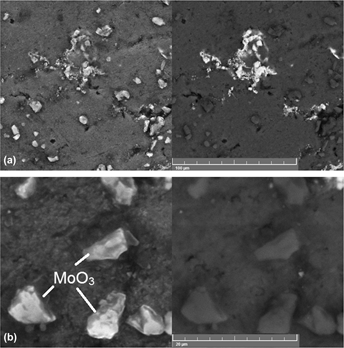Crossref Citations
This article has been cited by the following publications. This list is generated based on data provided by
Crossref.
Marichamy, S.
Saravanan, M.
Ravichandran, M.
and
Veerappan, G.
2016.
Parametric optimization of EDM process on α–β brass using Taguchi approach.
Russian Journal of Non-Ferrous Metals,
Vol. 57,
Issue. 6,
p.
586.
Mohanavel, V.
Rajan, K.
Kumar, S. Suresh
and
Ganeshan, P.
2017.
Manufacturing and mechanical characterization of dual particle reinforced hybrid composites.
p.
1.
Chauhan, Sandeep
Verma, Vikas
Prakash, Ujjwal
Tewari, P. C.
and
Khanduja, Dinesh
2017.
Analysis of powder metallurgy process parameters for mechanical properties of sintered Fe–Cr–Mo alloy steel.
Materials and Manufacturing Processes,
Vol. 32,
Issue. 5,
p.
537.
Ravichandran, M.
2017.
Optimization of Current, Voltage and Powder Feed Rate on Mechanical Properties of Plasma Transferred Arc Welded SS 316 Joints.
HTM Journal of Heat Treatment and Materials,
Vol. 72,
Issue. 5,
p.
300.
Meignanamoorthy, M.
and
Ravichandran, M.
2018.
Synthesis of Metal Matrix Composites via Powder Metallurgy Route: a Review.
Mechanics and Mechanical Engineering,
Vol. 22,
Issue. 1,
p.
65.
Mohanavel, V.
Ravichandran, M.
and
Suresh Kumar, S.
2018.
Optimization of tungsten inert gas welding parameters to.
Materials Today: Proceedings,
Vol. 5,
Issue. 11,
p.
25112.
Arivukkarasan, S.
Dhanalakshmi, V.
Stalin, B.
and
Ravichandran, M.
2018.
Mechanical and tribological behaviour of tungsten carbide reinforced aluminum LM4 matrix composites.
Particulate Science and Technology,
Vol. 36,
Issue. 8,
p.
967.
Stalin, B.
Sudha, G. T.
and
Ravichandran, M.
2018.
Investigations on Characterization and Properties of Al-MoO3 Composites Synthesized Using Powder Metallurgy Technique.
Silicon,
Vol. 10,
Issue. 6,
p.
2663.
Meignanamoorthy, M.
Ravichandran, M.
Elmariung, A.
and
Dinesh Kumar, S.
2019.
Advances in Manufacturing Technology.
p.
607.
Srinivasan, D
Meignanamoorthy, M
and
Ravichandran, M
2019.
Optimization of process parameters of boron carbide filled Aluminium matrix composites using Grey Taguchi method.
Materials Research Express,
Vol. 6,
Issue. 7,
p.
076504.
Susila, A B
Sugihartono, I
and
Marpaung, M A
2019.
Study on mechanical properties of Metal Matrix Composites (MMCs) Al-Cu-Mg/SiCp with Powder Metallurgy.
Journal of Physics: Conference Series,
Vol. 1402,
Issue. 4,
p.
044109.
Stalin, B.
Sudha, G.T.
Kailasanathan, C.
and
Ravichandran, M.
2020.
Effect of MoO3 ceramic oxide reinforcement particulates on the microstructure and corrosion behaviour of Al alloy composites processed by P/M route.
Materials Today Communications,
Vol. 25,
Issue. ,
p.
101655.
Mohanavel, V.
Vinoth, T.
Iyankumar, R.
and
Vinoth, N.
2020.
Mechanical and corrosion behaviour of copper matrix composites fabricated by powder metallurgy process.
Materials Today: Proceedings,
Vol. 33,
Issue. ,
p.
3394.
Rajaparthiban, J.
Saravanavel, S.
Ravichandran, M.
Vijayakumar, K.
and
Stalin, B.
2020.
Investigation on effect of machining parameters using TGRA approach for AISI 316 steel.
Materials Today: Proceedings,
Vol. 24,
Issue. ,
p.
1282.
V., Anandakrishnan
S., Sathish
Muthukannan, Duraiselvam
V., Dillibabu
and
N., Balamuralikrishnan
2020.
Dry sliding wear behavior of Inconel 718 additively manufactured by DMLS technique.
Industrial Lubrication and Tribology,
Vol. 72,
Issue. 4,
p.
491.
Ranganatha, S. R.
and
Shantharaja, M.
2020.
Sea water corrosion behavior of Al 2014 based hybrid composite for marine application.
Vol. 2247,
Issue. ,
p.
040009.
Rajaparthiban, J.
Ravichandran, M.
Stalin, B.
Ramesh Kumar, P.
and
Mohanavel, V.
2020.
Machining of EN31 Steel Using Carbide Insert – A Statistical Approach.
Materials Today: Proceedings,
Vol. 22,
Issue. ,
p.
2559.
Meignanamoorthy, M.
and
Ravichandran, M.
2020.
Microstructure Analysis and Optimization of Parameters for Improved Properties in High Strength AA8079 (Al–Fe–Cu–Si–Zn).
Physics of Metals and Metallography,
Vol. 121,
Issue. 4,
p.
374.
Dinesh Kumar, S.
Ravichandran, M.
Sakthivelu, S.
Meignanamoorthy, M.
Chanakyan, C.
and
Alagarsamy, S.V.
2020.
Mechanical properties of magnesium-silicon carbide composite fabricated through powder metallurgy route.
Materials Today: Proceedings,
Vol. 27,
Issue. ,
p.
1137.
Wan, Qiong
Li, Fuguo
Wang, Wenjing
Hou, Junhua
Cui, Wanyue
and
Li, Yongsheng
2021.
Microstructure and properties of in situ Ti–Al intermetallic compound-reinforced Al matrix composites with dispersive distribution of core–shell-like structure.
Composites and Advanced Materials,
Vol. 30,
Issue. ,
